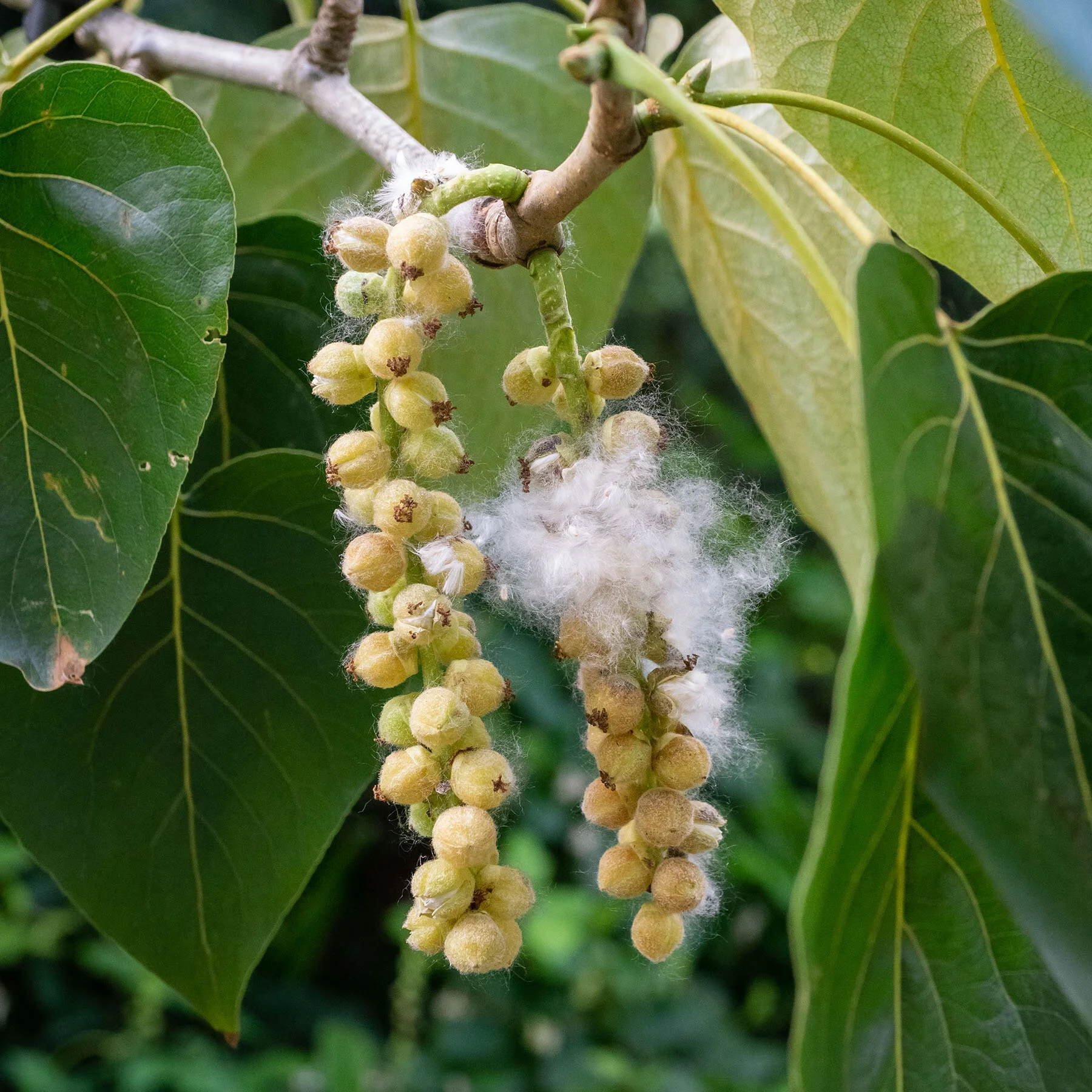It’s after Memorial Day and snow is piling up on my mailbox!
These are the seeds of black cottonwood, Populus trichocarpa, the tallest broadleaf tree in western North America. Every year at about this time, female black cottonwoods release a blizzard of seeds encased in cottony filaments to help keep them airborne.
“Female?” Yes, black cottonwood is one of the Pacific NW’s few native tree species that has separate male trees and female trees. One has male flower parts that produce pollen; the other has female flower parts that produce eggs which, after pollination, develop into the filamentous seeds.
Trees that have separate sexes are by far the minority in the Pacific NW. Most species—for example, Douglas-firs—have male and female reproductive parts on the same tree.
It can be hard to get a close look at black cottonwood catkins. They tend to grow high off the ground to give the seeds an opportunity to catch the breeze.
Black cottonwood is a specialist in quick growth, starting with seed formation. Most Pacific NW trees release their seeds in late-summer or fall; black cottonwoods release their seeds at the end of May or the beginning of June, coinciding with high water receding from river banks.
Black cottonwoods, in their first few decades of growth, shoot up faster than other native trees including fast-starters like Douglas-firs and red alders. Black cottonwoods can reach 100’/30m tall in just a few decades. They grow faster than the competition to avoid getting shaded out; they are sun-loving and do poorly in the shade.
Black cottonwoods begin reproducing after just half-a-dozen years. But they have a short life compared to many Pacific NW trees, often lasting just 150 or 200 years.
Black cottonwoods are the milers, not marathoners, of Pacific NW trees. They sprout easily, grow rapidly, begin reproducing early, and die young. Perhaps this is necessary because one of their favorite environments is river banks; and river banks don’t stay in one place for long.

